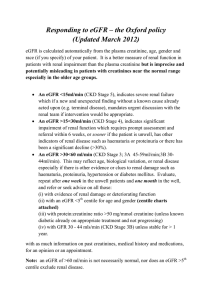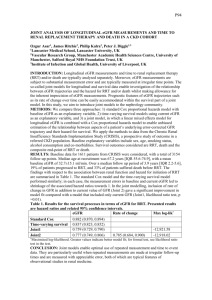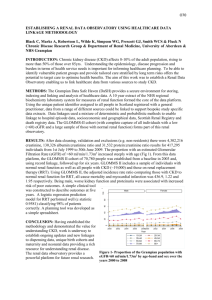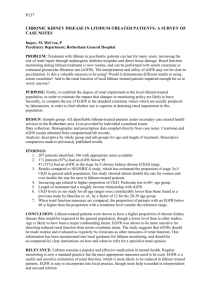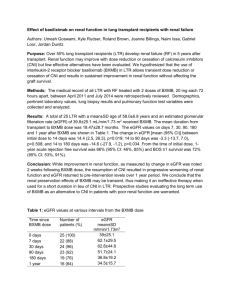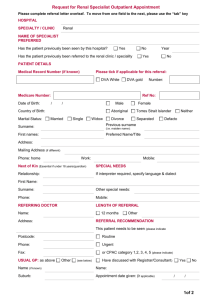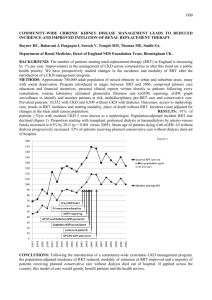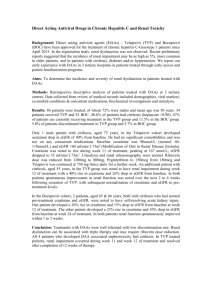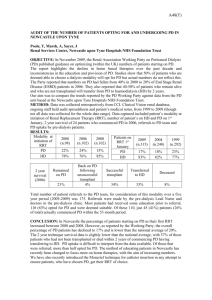factors associated with progression to renal replacement therapy in
advertisement
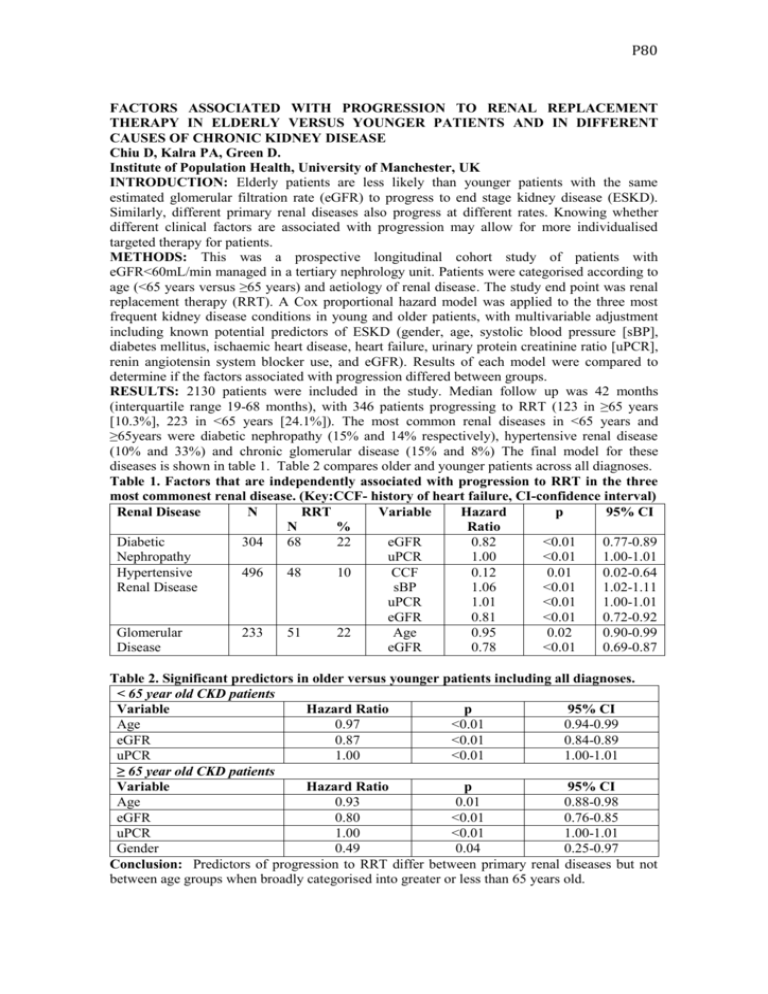
P80 FACTORS ASSOCIATED WITH PROGRESSION TO RENAL REPLACEMENT THERAPY IN ELDERLY VERSUS YOUNGER PATIENTS AND IN DIFFERENT CAUSES OF CHRONIC KIDNEY DISEASE Chiu D, Kalra PA, Green D. Institute of Population Health, University of Manchester, UK INTRODUCTION: Elderly patients are less likely than younger patients with the same estimated glomerular filtration rate (eGFR) to progress to end stage kidney disease (ESKD). Similarly, different primary renal diseases also progress at different rates. Knowing whether different clinical factors are associated with progression may allow for more individualised targeted therapy for patients. METHODS: This was a prospective longitudinal cohort study of patients with eGFR<60mL/min managed in a tertiary nephrology unit. Patients were categorised according to age (<65 years versus ≥65 years) and aetiology of renal disease. The study end point was renal replacement therapy (RRT). A Cox proportional hazard model was applied to the three most frequent kidney disease conditions in young and older patients, with multivariable adjustment including known potential predictors of ESKD (gender, age, systolic blood pressure [sBP], diabetes mellitus, ischaemic heart disease, heart failure, urinary protein creatinine ratio [uPCR], renin angiotensin system blocker use, and eGFR). Results of each model were compared to determine if the factors associated with progression differed between groups. RESULTS: 2130 patients were included in the study. Median follow up was 42 months (interquartile range 19-68 months), with 346 patients progressing to RRT (123 in ≥65 years [10.3%], 223 in <65 years [24.1%]). The most common renal diseases in <65 years and ≥65years were diabetic nephropathy (15% and 14% respectively), hypertensive renal disease (10% and 33%) and chronic glomerular disease (15% and 8%) The final model for these diseases is shown in table 1. Table 2 compares older and younger patients across all diagnoses. Table 1. Factors that are independently associated with progression to RRT in the three most commonest renal disease. (Key:CCF- history of heart failure, CI-confidence interval) Renal Disease N RRT Variable Hazard p 95% CI N % Ratio Diabetic 304 68 22 eGFR 0.82 <0.01 0.77-0.89 Nephropathy uPCR 1.00 <0.01 1.00-1.01 Hypertensive 496 48 10 CCF 0.12 0.01 0.02-0.64 Renal Disease sBP 1.06 <0.01 1.02-1.11 uPCR 1.01 <0.01 1.00-1.01 eGFR 0.81 <0.01 0.72-0.92 Glomerular 233 51 22 Age 0.95 0.02 0.90-0.99 Disease eGFR 0.78 <0.01 0.69-0.87 Table 2. Significant predictors in older versus younger patients including all diagnoses. < 65 year old CKD patients Variable Hazard Ratio p 95% CI Age 0.97 <0.01 0.94-0.99 eGFR 0.87 <0.01 0.84-0.89 uPCR 1.00 <0.01 1.00-1.01 ≥ 65 year old CKD patients Variable Hazard Ratio p 95% CI Age 0.93 0.01 0.88-0.98 eGFR 0.80 <0.01 0.76-0.85 uPCR 1.00 <0.01 1.00-1.01 Gender 0.49 0.04 0.25-0.97 Conclusion: Predictors of progression to RRT differ between primary renal diseases but not between age groups when broadly categorised into greater or less than 65 years old.
